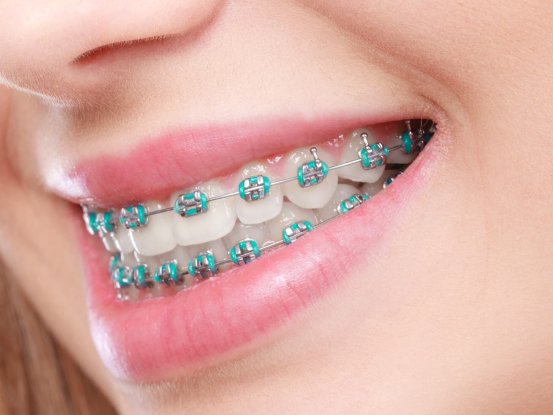

In the UK, there are now multiple orthodontic treatment methods that balance cost, comfort, and aesthetics. From traditional braces to clear aligners and lingual systems, patients can choose from a wide range of flexible solutions tailored to individual needs.
In the UK, there are now multiple orthodontic treatment methods that balance cost, comfort, and aesthetics. From traditional braces to clear aligners and lingual systems, patients can choose from a wide range of flexible solutions tailored to individual needs.

Metal braces remain one of the most widely used orthodontic options, offering reliable results at a relatively low price. Stainless steel brackets are attached to the teeth and connected with wires, adjusted periodically to gradually shift teeth into position.
Cost: £1,800 – £3,000
Treatment Time: 12–24 months, depending on complexity
Best For: Children, adults, and complex alignment issues
Pros: Proven effectiveness, affordable, handles difficult cases
Cons: Noticeable appearance, requires strict oral care and dietary restrictions
Ceramic braces use tooth-colored or clear brackets, making them much less visible while maintaining similar effectiveness to metal braces.
Cost: £2,000 – £4,000
Pros: Subtle appearance, suitable for teens and adults, fixed system ensures continuous progress
Cons: Slightly more costly, prone to staining, requires excellent cleaning habits
Instead of elastic bands, self-ligating braces use a built-in clip to secure the wire, reducing friction and potentially improving comfort.
Cost: £3,000 – £7,000
Pros: May shorten treatment time, easier to clean, less pressure on teeth
Cons: Higher price range, still visible though clear versions exist
Lingual braces are placed on the inner side of the teeth, making them invisible to others.
Cost: £5,000+
Treatment Time: 18–24 months
Pros: Completely hidden, effective for complex cases
Cons: Expensive, harder to clean, may temporarily affect speech, requires specialist orthodontists
Clear aligners are custom-made, removable trays that gradually adjust teeth. Their transparency makes them an attractive alternative to traditional braces.
Cost: £2,000 – £5,000 (depending on brand and case complexity)
Popular UK Providers: Caspersmile, Impress, Diamond Whites, SmileWhite, MySmile, Dr Clear Aligners, Invisalign
Treatment Time: 6–18 months with trays changed every 1–2 weeks
Pros: Nearly invisible, removable for eating/cleaning, comfortable, ideal for mild–moderate cases
Cons: Requires 20–22 hours daily wear, costlier than metal braces, less suitable for severe misalignments without in-clinic care
Primarily for patients under 18 who meet medical criteria (IOTN scale).
Treatment usually limited to metal braces.
Minimal or no cost for eligible patients.
Long waiting lists, limited availability for adults.
Wide selection of treatments (ceramic, self-ligating, lingual, clear aligners).
Faster access, flexible appointment options.
Higher cost but often with payment plans.
Preferred by adults and those seeking discreet, modern solutions.
First appointment costs: £50–£200.
Examinations may include scans or X-rays (£50–£150 extra).
Orthodontist provides treatment options, timeline, and personalized pricing.
0% Interest Plans: Spread costs over 12–24 months.
Healthcare Loans: Manageable long-term repayments.
Insurance & Work Benefits: Some policies include orthodontic coverage.
Services like Toothfairy app provide online consultations and home-based clear aligner programs.
Aligners delivered directly, reducing in-clinic visits.
Requires strict patient compliance.
Extra Costs: Retainers (£100–£300), repairs, or additional dental work.
Treatment Length: Faster treatments may cost more but reduce appliance wear.
Provider Experience: Skilled orthodontists may charge more but deliver better outcomes.
Lifestyle Needs: Aligners offer flexibility; braces ensure continuous progress.
Appearance: Some patients prioritize discreet treatment options.
The right choice depends on budget, lifestyle, dental needs, and appearance preferences.
Metal braces: Affordable and effective for complex corrections.
Clear aligners: Discreet and flexible, ideal for mild to moderate cases.
Ceramic, self-ligating, lingual braces: Alternatives balancing comfort and visibility at varied price levels.
Always begin with a professional consultation to check NHS eligibility or private options. With advancements in 2025, patients now have more opportunities than ever to find affordable, effective orthodontic care in the UK.